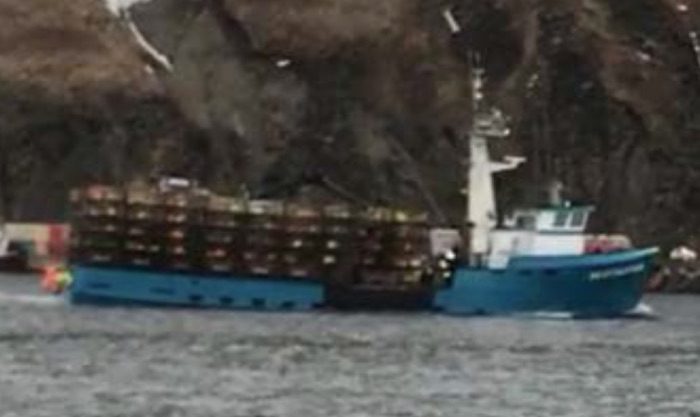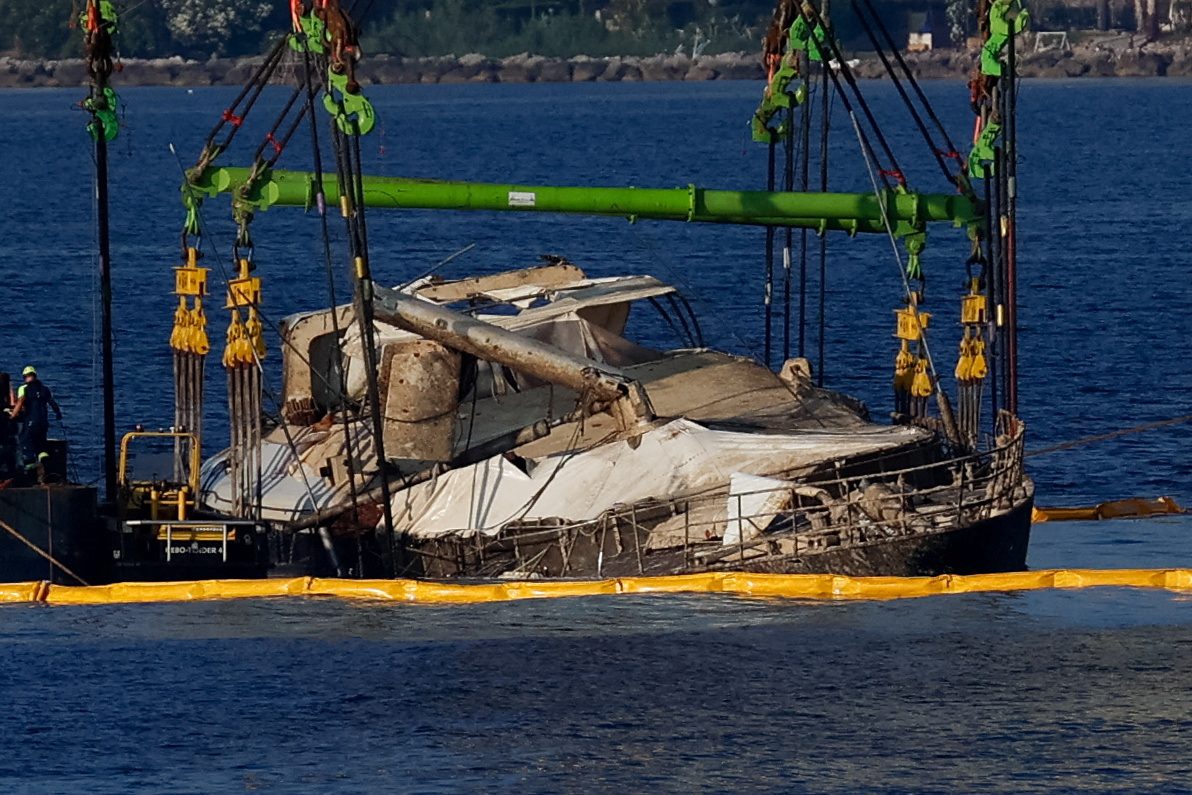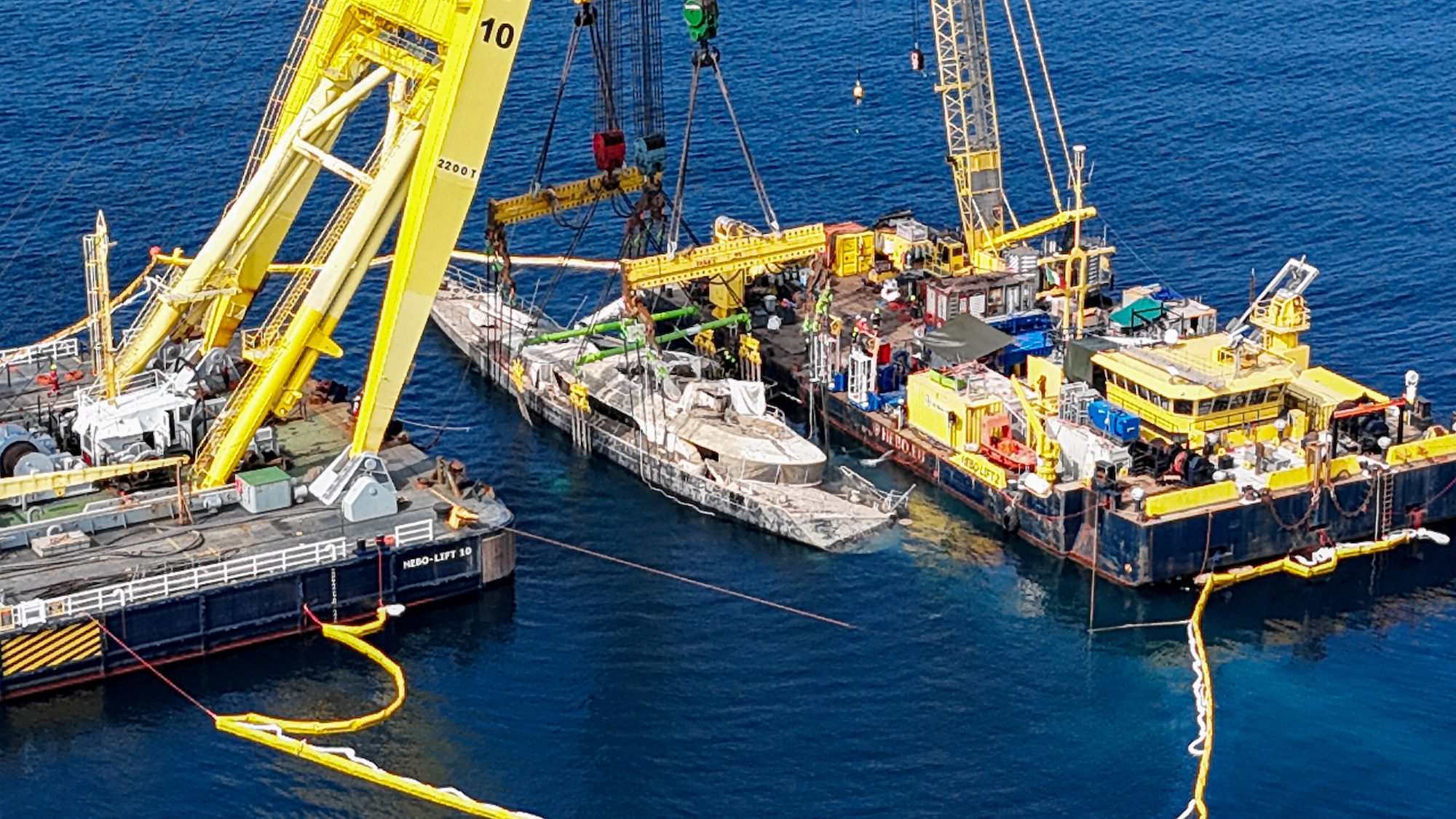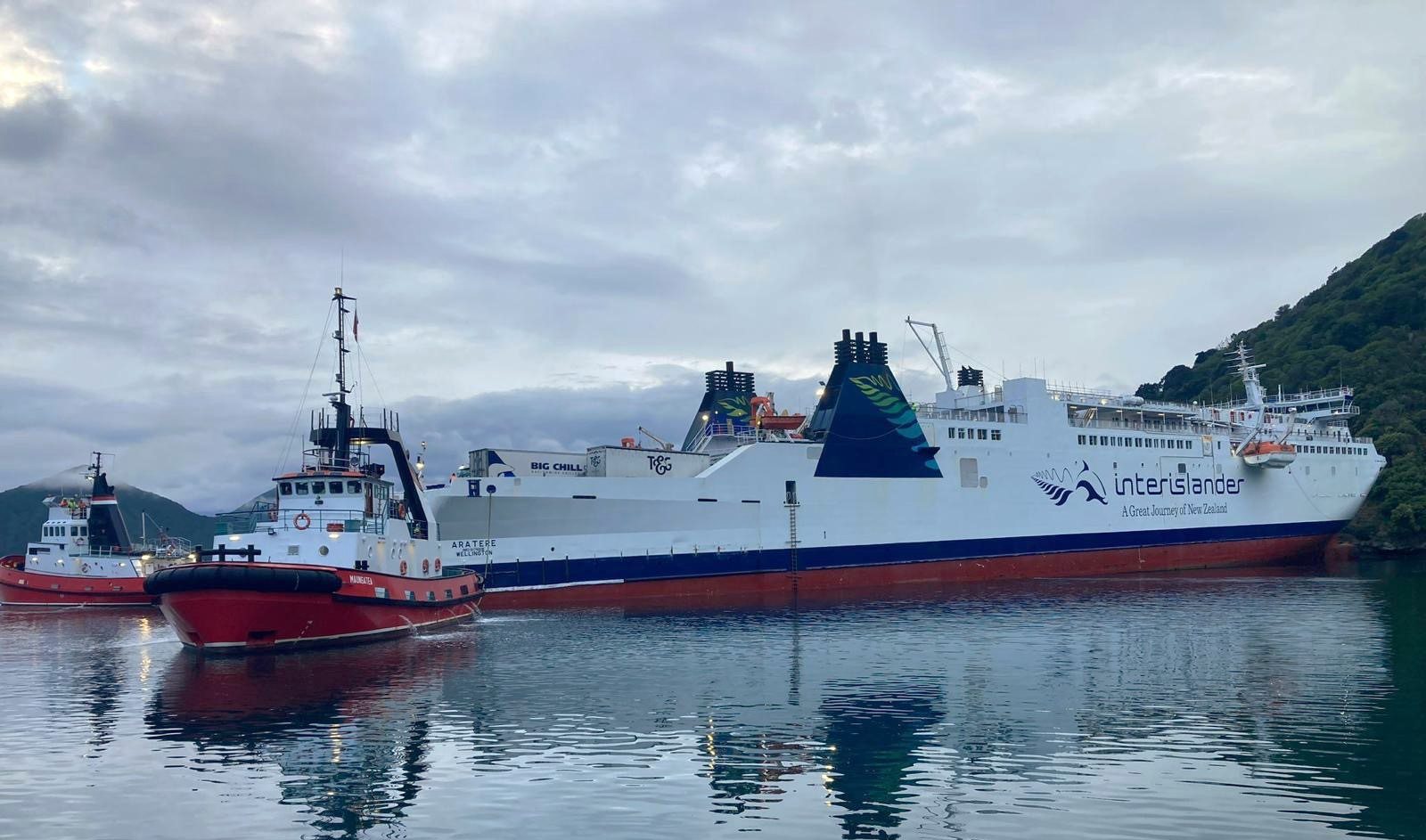A screenshot from video of the Destination as it arrived in Dutch Harbor carrying 200 crab pots on February 9, two days before the accident. (Video courtesy of April Lane crewmember)
Note: The following Findings of Concern is being distributed by the U.S. Coast Guard following the February 2017 loss of the FV Destination in the Bering Sea with the loss of all six crew members. A National Transportation Safety Board report on the accident released last year said the Destination capsized and sank due to an accumulation of ice on the vessel and its fishing gear after encountering forecasted heavy freezing spray conditions.
Findings of Concern 006-19 – Impacts of Modifications, Alterations and Weight Creep on Stability
Purpose. The U.S. Coast Guard issues Findings of Concern (FoC) to disseminate information related to unsafe conditions that investigators identified as causal factors in a casualty and could contribute to future incidents. FoCs are intended to educate the public, state, or local agencies about the conditions discovered so they may address the findings with an appropriate voluntary action or so they can highlight existing applicable company policies or state/local regulations within their areas of influence. These FoCs complement U.S. Coast Guard Marine Safety Alert 11-07, “Remain Upright by Fully Understanding Stability.”
The Incident. In February 2017, immediately after 27 days of cod fishing, a 98 foot commercial fishing vessel carrying 200 crab pots with a crew of six departed Dutch Harbor, Alaska, and proceeded towards St. Paul Island to drop off bait with the intent to transit to the Opilio crab fishing grounds. The vessel got underway despite multiple National Weather Service (NWS) marine forecasts indicating areas of freezing spray throughout the vessel’s planned route. After sailing for about thirty hours and while approximately 4.4 miles off of St. George Island, automatic identification system (AIS) data showed that the vessel’s speed abruptly slowed and its heading swung hard to starboard into the prevailing seas and northeastern winds. Shortly thereafter, the vessel appeared to suddenly lose maneuverability. Its heading pivoted to the west, the vessel drifted to the north and sank, taking the lives of all six crew members.
Contributing Factors and Analysis. The investigation showed that the owner failed to properly use the services of a qualified individual to formally evaluate and update vessel stability instructions following changes to vessel structure and loading conditions. These included:
* installation of a bulbous bow,
* addition of bulwark on the bow, and
* use of larger, heavier crab pots.
The weight of the larger, heavier crab pots exceeded that of the pots used to formulate the existing and most current stability instructions. Although investigators do not know if the vessel master referred to existing stability instructions for operating the vessel, but the instructions were incorrect, and any decisions based on them would have been faulty. Additionally, a decision to place an additional 3,080 pounds of crab bait on top of the 5 tiers of stacked crab pots, raised the vessel’s center of gravity and further reduced the vessel’s stability. The Coast Guard believes that these issues, combined with the master’s decision to depart port with a fatigued crew, active NWS freezing spray warnings in the area of transit and in a heavily loaded condition, negatively impacted the vessel’s stability, contributing to the vessel’s capsize and sinking.
Findings of Concern: Coast Guard investigators have identified the following voluntary actions for an owner / operator of similar vessels and operations to consider in order to reduce the likelihood of recurrence:
* Owners, operators, and masters should maintain an active awareness of vessel stability issues at all times, including the need for qualified individuals and naval architects to update stability instructions and booklets when structural changes are made to a vessel, other equipment or operational gear is changed, or their placement is altered. Furthermore, qualified individuals and naval architects should take the opportunity when stability instructions and booklets are updated to examine the vessel’s stability history to ensure previous stability calculations were sound and are suitable to continue to serve as a solid basis for any changes and updates.
* Owners, operators, and masters are encouraged to attend formalized stability training which should include stability principles regarding overloading, the effects of alterations and weight creep, icing, watertight integrity, deck drainage, and other issues particular to their type of vessel and fishery.
* Owners and operators are encouraged to take advantage of the flexibility of the stability instruction requirements for uninspected commercial fishing vessels in 46 CFR 28.530. These regulations, applicable to vessels 79 feet or over, intentionally provide maximum flexibility for owners and qualified individuals to determine how best to convey stability information to the masters or individuals in charge of their vessels. In doing so, they should take into consideration that operating personnel in the commercial fishing industry do not typically have specialized stability training.
* Owners, operators, masters, qualified individuals, technical superintendents and other personnel need to remain fully cognizant of “weight creep,” which is the result of modifications and alterations to the vessel that occur over its lifespan. Modifications and alterations may occur due to changing fisheries, fishing methods, variations in equipment and area of operation. These weight changes impact stability, and ultimately create the need for a qualified individual to revisit the stability instructions and associated calculations.
* One way to prevent “weight creep” is to develop a Modification and Alteration Log which can be maintained in various formats. The log can be as simple as a notebook or spreadsheet, or in the form of computer software. The vessel’s existing stability instructions and data should be first validated by a qualified individual or naval architect prior to creating a log to ensure future stability calculations start from an accurate baseline.
Closing. These findings of concern are provided for informational purpose only and do not relieve any domestic or international safety, operational, or material requirement. For any questions or comments please contact Office of Investigations and Analysis by phone at (202) 372-1029 or by email at [email protected].
Additional Information: Coast Guard Fishing Vessel Stability Information – A Best Practices Guide to Vessel Stability
FishSafeWest.info – Stability training and additional marine safety information.

 Join The Club
Join The Club











